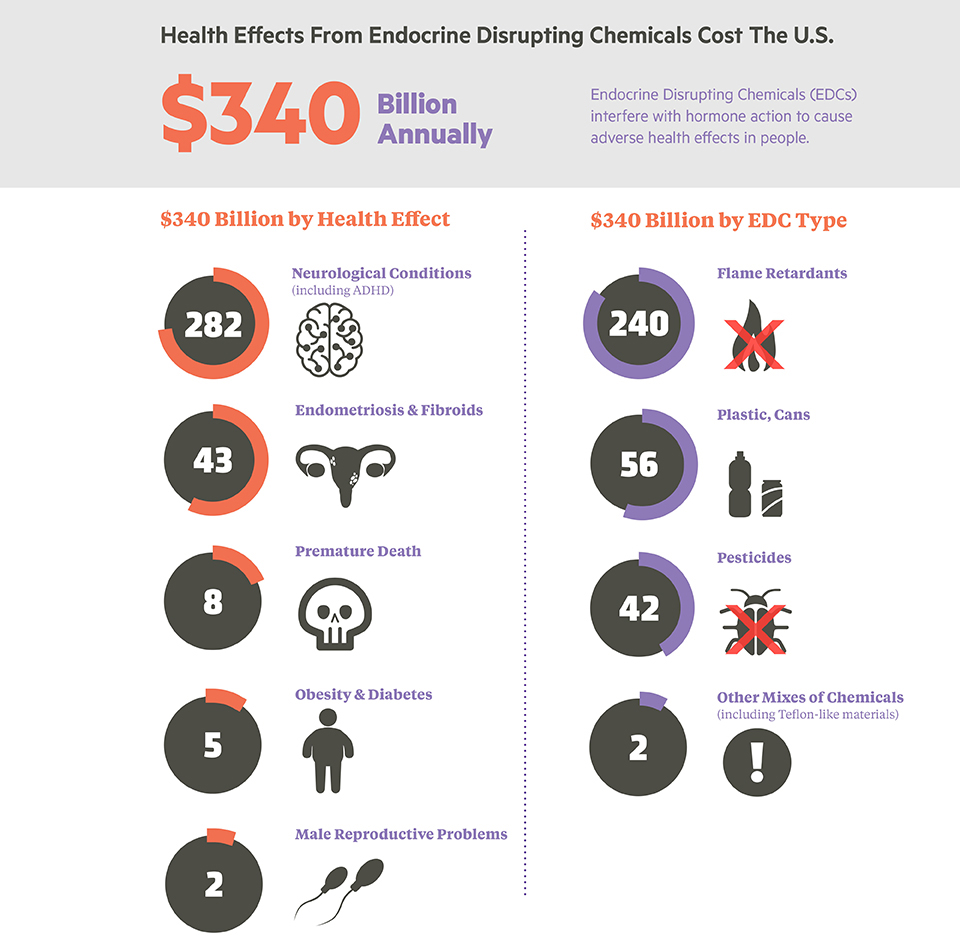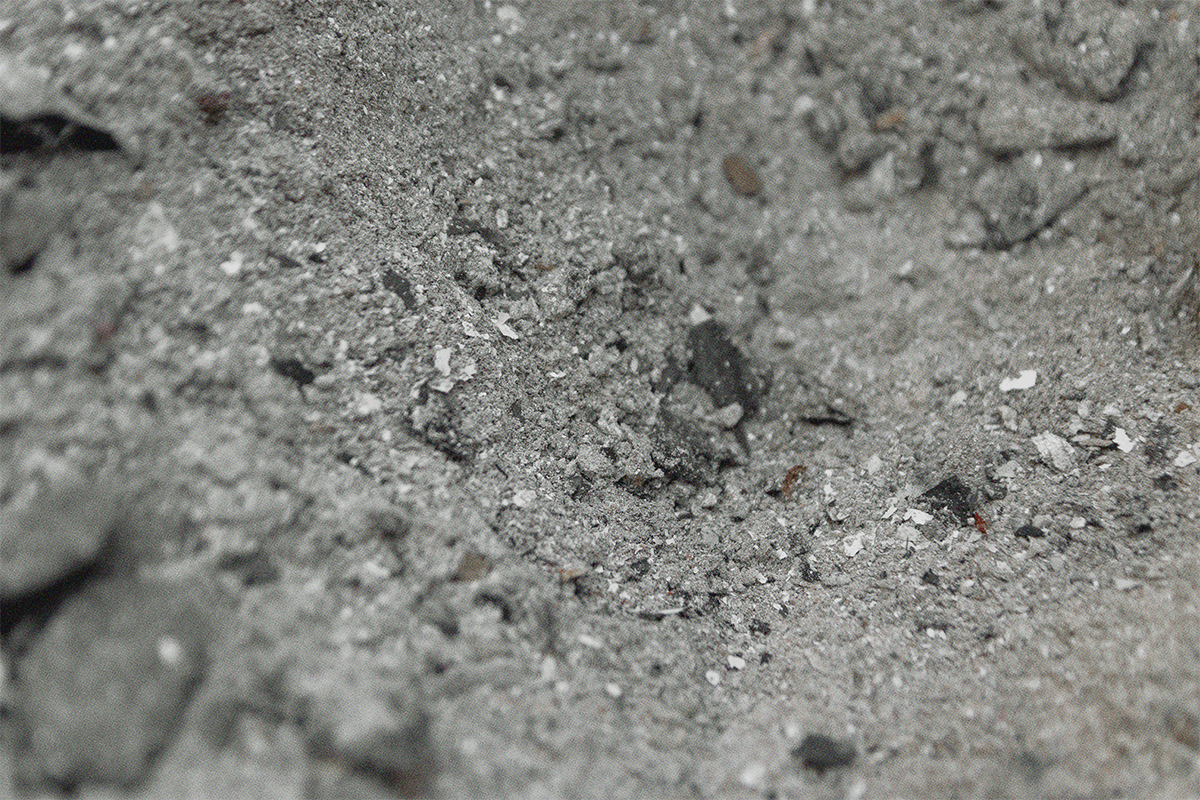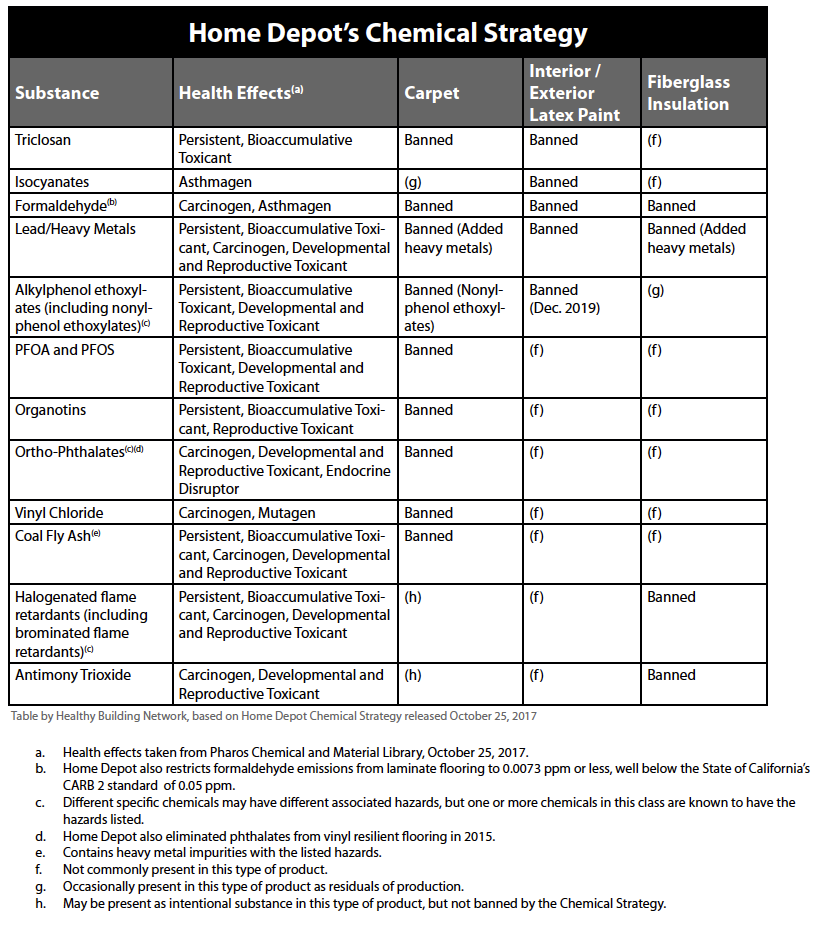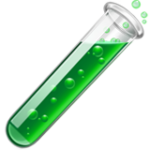 READ HABITABLE’S NEW REPORT
READ HABITABLE’S NEW REPORTFor years, Habitable has been thinking about and consulting with our partners about how to describe the impact of choosing healthier building products. Here’s why this is a complex and challenging issue for the industry:
- Incomplete knowledge of what many building products are made of
- Limited understanding of the health hazards of the thousands of chemicals in commerce today
- Trade-offs when making material choices
These reasons drive the need for full transparency of chemical contents and full assessment of chemical hazards. This can ultimately lead to optimizing products in order to avoid hazardous chemicals.
Toxic chemicals have a huge and complex impact on the health and well-being of people and the environment. Those impacts are spread throughout a product’s life cycle. For example, fenceline communities can be exposed during the manufacturing of products in adjacent facilities, workers can be exposed on the job during the manufacturing and installation processes, and building occupants can be exposed during the product’s use stage. Some individuals suffer multiple exposures because they are affected in all of those instances.
In addition, toxic chemicals can be released when materials are disposed of or recycled. When they incorporate recycled content into new products, manufacturers can include legacy toxicants, inhibiting the circular economy and exposing individuals to hazardous chemicals—even those that have been phased out as intentional content in products.
We know intrinsically that hazardous chemicals have the potential to do harm and that they commonly do so. For champions of this cause, that understanding of the precautionary principle is enough. Others still need to be convinced and often want to quantify the impact of a healthy materials program. How can healthy building champions start to talk about and quantify the impacts of material choices?


Broad Impacts of Toxic Chemicals
One way researchers quantify the impact of chemicals is to consider the broad economic impacts of chemical exposures. Evidence increasingly shows that toxic chemical exposures may be costing the USA billions of dollars and millions of IQ points. One recent study estimates that certain endocrine-disrupting chemicals cost the United States $340 billion each year. This is a staggerring 2.3% of the US gross domestic product.1 And that is for only a subset of the hazardous chemicals that surround us every day. These numbers provide important context for the larger discussion of toxic chemical use, but cannot easily be tied to daily decisions about specific materials.
Market Scale Impacts
For years, Habitable has been targeting orthophthalates in vinyl flooring as a key chemical and product category combination to be avoided. Orthophthalates can be released from products and deposited in dust which can be inhaled or ingested by residents—particularly young children who crawl on floors and often place their hands in their mouths3. By systematically reducing chemicals of concern in common products, we can all work together to continue to affect this scale of change in the marketplace and keep millions more tons of hazardous chemicals out of buildings.
Impacts on the Project Scale
Context is key for understanding the impact chemical reduction or elimination can have—a pound of one chemical may not have the same level of impact as a pound of another chemical. But, given the right context, this sort of calculation may prove useful as part of a larger story. The following examples provide context for the story of different impacts of different chemicals.
- Small decisions, big impacts: While many manufacturers and retailers have phased out hazardous orthophthalate plasticizers, some vinyl flooring may still contain them. If we consider an example affordable housing project, avoiding orthophthalates in flooring can keep dozens of pounds of these hazardous chemicals out of a single unit (about the equivalent of 10 gallons of milk).4 For a whole building, this equates to several tons of orthophthalates that can be avoided.5 It is easy to see how this impact quickly magnifies in the context of a broader market shift.
- Little things matter: Alkylphenol ethoxylates (APEs) in paints are endocrine-disrupting chemicals make up less than one percent of a typical paint. In this case, by making the choice to avoid APEs, a couple of pounds of these hazardous chemicals are kept out of a single unit (about the equivalent of a quart of milk). This translates to a couple of hundred pounds kept out of an entire building.6 This quantity may seem small compared to the tons avoided in the phthalate example above, but little things matter. Small exposures to chemicals can have big impacts, particularly for developing children.7 And, since our environments can contain many hazardous chemicals, and we aren’t exposed to just a single chemical at a time, these exposures stack up in our bodies.8
- Reducing exposure everywhere: Choosing products without hazardous target chemicals keeps them out of buildings, but can also reduce exposures as these products are manufactured, installed, and disposed of or recycled. Some chemicals may have impacts that occur primarily outside of the residence where they are installed, but these impacts can still be significant. Polyvinyl chloride (PVC), for example, a primary component of vinyl flooring, requires toxic processes for its production and can generate toxic pollution when it is disposed of. Manufacturing of the PVC needed to create the vinyl flooring for one building as described above can release dozens of pounds of hazardous chlorinated emissions, impacting air quality in surrounding communities.9 These fenceline communities are often low-income, and suffer from disproportionate exposure in their homes, through their work, and from local air pollution. If choosing non-vinyl flooring for a single building can help reduce potential exposure to hazardous chlorinated emissions in these fenceline communities, imagine the potential impacts of avoiding vinyl on a larger scale!
In addition to information about target chemicals to avoid, our Informed™ product guidance provides recommendations of alternative types of materials that are typically better from a health hazard perspective and includes steps to work toward the goal of full transparency of product content and full assessment of chemical hazards. This framework can help ensure that toxic chemicals and regrettable substitutions are avoided.
Each decision you make about the materials you use, each step toward using healthier products, can have big impacts within a housing unit, a building, and in the broader environment. Collectively, these individual decisions also influence manufacturers to provide better, more transparent products for us all. Ultimately, this can reduce the hazardous chemicals not just in our buildings but also in our bodies.
SOURCES
- Attina, Teresa M, Russ Hauser, Sheela Sathyanaraya, Patricia A Hunt, Jean-Pierre Bourguignon, John Peterson Myers, Joseph DiGangi, R Thomas Zoeller, and Leonardo Trasande. “Exposure to Endocrine-Disrupting Chemicals in the USA: A Population-Based Disease Burden and Cost Analysis.” The Lancet 4, no. 12 (December 1, 2016): 996–1003. https://doi.org/10.1016/S2213-8587(16)30275-3.
- “Disease Burden & Costs Due to Endocrine-Disrupting Chemicals.” NYU Langone Health, July 12, 2019. https://med.nyu.edu/departments-institutes/pediatrics/divisions/environmental-pediatrics/research/policy-initiatives/disease-burden-costs-endocrine-disrupting-chemicals.
- Bi, Chenyang, Juan P. Maestre, LiG Hongwan, GeR Zhang, Raheleh Givehchi, Alireza Mahdavi, Kerry A. Kinney, Jeffery Siegel, Sharon D. Horner, and Ying Xu. “Phthalates and Organophosphates in Settled Dust and HVAC Filter Dust of U.S. Low-Income Homes: Association with Season, Building Characteristics, and Childhood Asthma.” Environment International 121 (December 2018): 916–30. https://doi.org/10.1016/j.envint.2018.09.013.; Mitro, Susanna D., Robin E. Dodson, Veena Singla, Gary Adamkiewicz, Angelo F. Elmi, Monica K. Tilly, and Ami R. Zota. “Consumer Product Chemicals in Indoor Dust: A Quantitative Meta-Analysis of U.S. Studies.” Environmental Science & Technology 50, no. 19 (October 4, 2016): 10661–72. https://doi.org/10.1021/acs.est.6b02023.
- According to the USDA, milk typically weighs about 8.6 pounds per gallon. See: “Weights, Measures, and Conversion Factors for Agricultural Commodities and Their Products.” United States Department of Agriculture, June 1992. https://www.ers.usda.gov/webdocs/publications/41880/33132_ah697_002.pdf?v=0.
- HBN used the Common Products for Luxury Vinyl Tile and Vinyl Sheet to estimate the amount of plasticizer. We assumed a 100 unit building of 1000 square foot two-bedroom apartments with vinyl flooring throughout the units.
- HBN used the Common Product profiles for Eggshell and Flat Paint to estimate the amount of surfactant and assumed a 100 unit building of 1000 square foot two-bedroom apartments.
- Vandenberg, Laura N., Theo Colborn, Tyrone B. Hayes, Jerrold J. Heindel, David R. Jacobs, Duk-Hee Lee, Toshi Shioda, et al. “Hormones and Endocrine-Disrupting Chemicals: Low-Dose Effects and Nonmonotonic Dose Responses.” Endocrine Reviews 33, no. 3 (June 1, 2012): 378–455. https://doi.org/10.1210/er.2011-1050.
- Impacts can be additive, where health impacts are equal to the sum of the effect of each chemical alone. They can also be synergistic, where the resulting health impacts are greater than the sum of the individual chemicals’ expected impacts.
- HBN used the Common Products for Luxury Vinyl Tile and Vinyl Sheet to estimate the amount of PVC. We assumed a 100 unit building of 1000 square foot two-bedroom apartments with vinyl flooring throughout the units. Emissions are based on the Calvert City, KY Westlake plant examined in HBN’s Chlorine and Building Materials Project. According to EPA’s EJScreen tool, the census blockgroup where this facility is located is primarily low income, with 62% of the population considered low income (putting this census block group in the 88th percentile nationwide in terms of low income population). EJScreen, EPA’s Environmental Justice Screening and Mapping Tool (Version 2018). Accessed March 18, 2019. https://ejscreen.epa.gov/mapper/.
Symptoms of “sick building” syndrome include “headache; eye, nose, or throat irritation; dry cough; dry or itchy skin; dizziness and nausea; difficulty in concentrating; fatigue; and sensitivity to odors”.1
These symptoms can develop after long-term exposures, or they can occur after a single instance of exposure, as in the case reported by the Minnesota Daily last month.2 Three carpet installers were sent to the emergency room after installing carpeting in an apartment building intended for student housing near the University of Minnesota. The workers could not tell doctors what they were exposed to because the carpeting did not include a complete list of contents. To find out, the workers first measured the air quality with a device ordered off of Amazon, which immediately “jumped to red” when exposed to the carpeting. The Minneapolis Building and Construction Trade Council then sent carpet samples to a lab for emissions testing. This testing found total volatile organic compounds (TVOCs) at levels that “significantly exceed” typical levels in the air. The chemicals noted on the report included some on the Minnesota Department of Health list of Chemicals of High Concern.3
What we know is that there is no law or regulation that requires building product manufacturers to disclose all product content. One of the workers interviewed for the report said he has persistent symptoms including impaired memory function, ringing in his ears, and fatigue. Because current regulations will not protect consumers, workers, or building occupants from toxic chemicals in building products, it is up to building owners, designers, specifiers, architects, other AEC professionals to know better, so we can do better. This story highlights the need for full disclosure of building materials. Until that becomes the norm, use our InformedTM product guidance to identify building products–like carpet–that are healthier for people and our planet.

After ventilating the student housing building in Minneapolis, the city’s initially “high chemical readings” dropped. According to the Minnesota Daily article, the city’s inspections show the levels are now safe. Meanwhile, one of the workers who was initially sickened by the incident was an independent contractor and therefore ineligible for workers’ compensation for the symptoms he is still experiencing months later. This and future incidents are preventable. Safer selection of materials begins with product transparency.
SOURCES
- EPA, 1991.Air and Radiation (6609J). “Indoor Air Facts No.4: Sick Building Syndrome” Factsheet” (https://www.epa.gov/sites/production/files/2014-08/documents/sick_building_factsheet.pdf)
- MN Daily. 2019. “Chemical analysis finds potential health risks for former workers at the arrow” (https://mndaily.com/201203/news/ftprimeplace2/)
- chemicals found in testing of the carpet as cited in the MN Daily report included: ethyl hexanol and multicomponent solvents: “possibly naphtha, Stoddard solvent or petroleum distillate”. Naphtha, also known as Stoddard solvent is MDH chemical of high concern.
Home Depot, the world’s largest home improvement retailer, announced Sept. 17 that it will phase out the sale of all carpets and rugs containing PFAS chemicals, expanding the reach of its Chemical Strategy adopted in 2017.
The company said it will stop purchasing for distribution in the U.S., Canada and online any carpets or rugs containing PFAS chemicals by the end of 2019. The new policy has important implications beyond reducing the use of these chemicals, which are associated with serious health harm and last virtually forever in the environment.
Environmental justice & equity: As with the 12 chemicals banned under its original 2017 Chemicals Strategy, this policy makes important strides toward equity in the green building movement. Because it impacts products at all price points, not just premium products and not just those that qualify for the retailer’s Eco-Options program, the policy ensures that all contractors and do-it-yourself customers get healthier products regardless of the brand purchased, and regardless of whether or not the product has been certified “green.” This makes it easier to implement recommendations such as those Habitable provides through our Informed™ approach.

Market Influence
A similar policy change led by the retailer in 2015, banning phthalates from all vinyl flooring it sells, was quickly adopted by all other major retailers such as Lowes, Menards, and Lumber Liquidators. Similarly, when Lowes led the industry in banning the sale of deadly paint strippers in May, 2018, its major competitors followed suit within months
Class approach to chemicals
PFAS refers to a class of nearly 15,000 that repel liquids and resist sticking, including well-known brands such as Teflon, Gore-Tex, Stainmaster and Scotchgard. Many brands have stopped using the most well studied, “long-chain” compounds in this class, but continue to use less studied “short-chain” compounds, causing confusion for consumers. Independent scientists agree that a commitment to avoiding all PFAS is the right approach for consumers and the overall environment.
Widespread PFAS Contamination of the Environment Is a Growing Concern. The Environmental Working Group (EWG) has identified over 700 sites where PFAS were detected and cited federal data suggesting that up to 110 million Americans may have PFAS in their drinking water.1 HBN’s analysis of chlorine and PVC production documented unexpectedly high use of PFAS as an alternative to mercury- and asbestos-based chlorine manufacturing technology, raising new concerns about the role of chlorine-based products and the growing concern over global PFAS exposures. The chemical industry argues that only a few of these compounds have been found unsafe, and all others should be presumed innocent until proven guilty. In 2019, 3M company launched a major public relations blitz2 to this effect, including a “PFAS Facts” website advocating that “Each PFAS compound needs to be evaluated based upon its own properties,”3 a process that would take federal regulators, at best, many decades to complete. EWG published a thorough refutation of 3M’s claims,4 and more than 250 independent scientists5 have called upon companies and regulators to stop producing and using PFAS except in the most essential applications. The Home Depot’s new carpet and rug policy, which we hope will soon be extended to other products including spray-on upholstery protection, such as 3M’s Scotchgard, follows this recommended class approach.
The Home Depot’s new policy commitment comes just two months before the release of the 2019 “Who’s Minding the Store?” Retailer Report Card, from the Mind the Store campaign, a nationwide coalition that challenges retailers to eliminate toxic chemicals and substitute safer alternatives. HBN is a coalition member and advised The Home Depot on its 2017 Chemical Strategy. The annual Report Card benchmarks retailers on their safer chemicals policies and implementation programs. The Home Depot earned a B- on the scorecard.
To learn more about PFAS and how to avoid them, watch the documentary The Devil You Know, available on all streaming services, and check out the new PFAS Central website, a project of our partners at the Green Science Policy Institute.
SOURCES
- https://www.ewg.org/research/report-110-million-americans-could-have-pfas-contaminated-drinking-water
- https://news.3m.com/press-release/company-english/3m-announces-pfas-initiatives-actions
- https://pfasfacts.com
- https://www.ewg.org/news-and-analysis/2019/09/science-pfas-rebuttal-3m-s-claims
- https://greensciencepolicy.org/madrid-statement/
Healthy Building Network (HBN) has expanded Pharos to include 14 subclasses of toxic flame retardants likely to be banned from use in children’s products by the US Consumer Product Safety Commission.
This follows a recent report from the National Academies of Science (NAS), “A Class Approach to Hazard Assessment of Organohalogen Flame Retardants,” which recommended evaluating similar flame retardants together as “the only possible practical approach.” HBN has championed this class-based approach because the alternative, regulating chemicals one at a time, often leads to regrettable substitutions, in which the simplest replacement for a hazardous chemical is a structural relative with similar desirable properties and similar toxicity.
In this report, NAS divided the broad class of organohalogen flame retardants into 14 subclasses based on a combination of chemical structure and predicted biological activity. The subclasses contain between 4 to 22 chemicals, though the NAS report emphasizes that this inventory is not necessarily comprehensive. HBN has incorporated these 14 subclasses (listed below) as compound groups, to make it easier for the community to review and discuss them. If you’re not a member of Pharos yet, you can register for free and see the hazards of the chemicals in two of the subclasses (alicycles or benzene aliphatics). Not surprisingly, within a subclass, many chemicals share the same hazards!

Compound groups are groups of chemicals that share structural or chemical features. In most cases, chemical regulations restrict the use of individual substances, though in some cases, they restrict a group or class of chemicals, such as organohalogen flame retardants or lead compounds. In cases like these, HBN creates a compound group for each class (and subclass) of chemicals. While a class-based regulatory approach can be more comprehensive, it can also be difficult to implement, since regulatory agencies rarely specify the chemicals within a group. To facilitate implementation of these restrictions, Pharos staff assigns specific chemicals to compound groups, making sure warnings from hazard lists are associated with them. This allows manufacturers to be confident that when they screen their product ingredients in Pharos, they will be alerted to any relevant regulations or hazards. This can also make it easier for companies using these chemicals to assign the appropriate hazards to improve communication about workplace safety.
These 14 new compound groups join over 600 other compound groups populated by Healthy Building Network’s research team and are available in our Pharos tool. Use these tools today to look up hazard data on over 140,000 chemicals for 22 hazard endpoints from >80 authoritative data sources. You can also search for chemicals by function, and use comparison tools to find safer alternatives.
As with all work in Pharos, compound groups are open and collaborative. We welcome suggestions for additions and invite all members of the community to initiate and engage in discussions about these and other chemical hazard issues.
14 Subclasses of Halogenated Flame Retardants
- Polyhalogenated alicycles
- Polyhalogenated aliphatic carboxylate
- Polyhalogenated aliphatic chains
- Polyhalogenated benzene alicycles
- Polyhalogenated benzene aliphatics and functionalized
- Polyhalogenated benzenes
- Polyhalogenated bisphenol aliphatics and functionalized
- Polyhalogenated carbocycles
- Polyhalogenated diphenyl ethers
- Polyhalogenated organophosphates
- Polyhalogenated phenol derivatives
- Polyhalogenated phenol-aliphatic ethers
- Polyhalogenated phthalates/benzoates/imides
- Polyhalogenated triazines
You may know the phrase, “you are what you eat.” There is a parallel concept when it comes to hazardous chemicals—you are what surrounds you!
Every day we come in contact with a large number of chemical products. Think of the last time you walked through a space being remodeled, or sat in a new car and thought “what’s that smell?” Your body notices that smell because a chemical or substance is interacting with the smell receptors in your nose. The same characteristics that allow it to interact with your nose could make those chemicals affect the body in other ways too—sometimes causing harm. The more invisible moments occur when sleeping on your mattress filled with flame retardants or using your personal care products while getting ready for work. Perhaps you work in a factory, as a contractor installing products, or some other job requiring direct contact with a variety of chemicals. The list (both visible and invisible) goes on and on. While a one-time exposure might not lead to health effects, a life-time of exposure and buildup to these chemicals can. More and more scientific evidence links these chemical exposures to diseases like cancer and diabetes, as well as developmental delays, reproductive health issues, and Autism Spectrum Disorder1.
There are three main exposure pathways: 1) inhalation – breathing in contaminated air, 2) ingestion – the inadvertent passing of dust or other chemical residues from hands to mouth, and 3) because our skin is like a sponge – absorption through dermal contact. According to the Environmental Working Group (EWG), babies still in the womb are exposed to more than 200 chemicals that pass from their mother through the umbilical cord2. This should make you wonder—what are the chemicals I may not realize are entering my body? There is a term used to describe the load of chemicals in the human body—body burden.

There’s what in my body?!
We sat down with Teresa McGrath, Healthy Building Network’s (HBN) Chief Research Officer earlier this year to talk about urine, specifically hers. Earlier this year, Teresa participated in a study on chemical body burden led by Silent Spring Institute. Teresa is an avid runner who’s completed marathons and loves snacking on fresh vegetables from her local farmers market. She is one of the healthiest and most health conscious individuals on our team and we were very interested in learning her results.
The study, titled Detox Me Now, included approximately 350 participants. Teresa submitted her urinary sample for testing 15 chemicals, including3:
- Chlorinated phenols
- Bisphenols
- Alkylphenol ethoxylates (found in paints)
- UV filters
- Parabens (commonly used in makeup products as a preservative)
- Antimicrobials
Teresa’s Results
Her study results detected seven of the 15 chemicals tested in her urine sample. There are a couple of basic rules to follow when it comes to interpreting biomonitoring results. The first is that a higher number is not always a reason for concern4. And the second is that from a hazard perspective, not all chemicals are the same5. Each chemical possesses its own set of health effects at different dosages and routes of exposure6.
Regrettable Substitutions
During our conversation, Teresa McGrath offered a particularly interesting study finding—her differing bisphenol results particularly when compared to the study median and the US median.
This study tested for two bisphenols, bisphenol-A (BPA) and bisphenol-S (BPS). If BPA sounds familiar, that is probably because this is the much-talked about ingredient commonly used in polycarbonate plastic bottles, lining for food and beverage cans and thermal paper receipts. It can cause endocrine disruption.7,8 BPS is a common replacement for BPA in many thermal applications including paper receipts and plastics and has similar health concerns as BPA9. Teresa’s results for BPA were lower than the median for the Silent Spring Detox Me Now study participants AND lower than the US median10. However, her BPS levels were greater than her BPA levels, greater than the median for the Silent Spring Detox Me Now study participants AND greater than the US median11. This is illustrated in the following graphic from her study report.
The report offers two possible explanations:
- Teresa successfully avoids BPA by choosing products that are BPA-free and unwittingly preferring products that use BPS, the common BPA alternative.
- The timing of the studies coincided with an industry-wide shift from BPA to other bisphenols, including BPS. The US median data (NHANES) was collected between 2013 and 2014, while the Detox Me Action Kit test samples are dated 2016 to 2018.
By simply purchasing BPA-free products, one can reduce exposure to BPA. However, industries continue to choose “regrettable substitutions” or replacing one chemical with another similar chemical and/or a chemical with unknown health effects. Much of our work focuses on helping industries avoid regrettable substitutions.
Here’s how you can decrease your exposure to toxic chemicals.
Wrapping up our conversation with Teresa, we briefly discussed the overall study implications and additional survey results. Compared to the National Health and Nutrition Examination Survey (NHANES) conducted by the Centers for Disease Control, participants of this study possessed lower chemical burdens than most people in the United States. One explanation for this may be attributed to 43 percent of participants self-reporting that they avoid products with parabens, BPA, triclosan, and fragrance, and an additional 40 percent reported avoiding two or three of those chemicals.
So, how can you reduce your exposure? Silent Spring offers some ideas, including:
- Asking your favorite brands and stores to choose safer chemicals
- Avoiding personal care products and cosmetics that list parabens as ingredients
- Learning which personal care and cosmetics companies avoid harmful chemicals
You can also download their Detox Me Now App for more tips.
Biomonitoring studies similar to Silent Spring’s are springing up in recent years, as have articles about their results, such as this story in the Guardian. For only a few hundred dollars, consumers can know the exact chemical composition of their bodies. For those who find sample submission undesirable, HBN has added a new feature in our Pharos platform that provides links to biomonitoring databases with information on chemicals identified in the bodies of individuals from different regional communities. The results continually shed light on the need for greater industrial transparency and a transition to safer products.
This is one more example of why HBN passionately paves the way to safer products, offering recommended alternatives from expert chemical analysis and by fostering collaborative industry partnerships.
SOURCES
- Kim et al., “Exposure to pesticides and the associated human health effects.” Science of the Total Environment 575, (2017). 525-535. https://doi.org/10.1016/j.scitotenv.2016.09.009
- Environmental Working Group, “ Body Burden: The Pollution in Newborns.” Environmental Working Group, last modified July 14, 2005, https://www.ewg.org/research/body-burden-pollution-newborns.
- Fransway et al.. “Parabens.” Dermatitis 30, 1 (2019). 3-31. doi:10.1097/DER.0000000000000429
- Casarett, Louis J., John Doull, and Curtis D. Klaassen. 2001. Casarett and Doull’s toxicology: the basic science of poisons. New York: McGraw-Hill Medical Pub. Division.
- Ibid.
- Ibid.
- National Toxicology Program, “Bisphenol A (BPA),” National Institute of Environmental Health Sciences, last modified May 23, 2019, https://www.niehs.nih.gov/health/topics/agents/sya-bpa/index.cfm.
- Silent Spring Institute, “Our Science”, Silent Spring Institute, accessed September 17, 2019, https://libanswers.snhu.edu/faq/48009.
- Ibid.
- Ibid. The “US median” results in this article refer to the NHANES study. The National Health and Nutrition Examination Survey (NHANES) is a program established in the 1960s run by the Centers for Disease Control that tracks the health of adults and children in the United States. NHANES tested surveyed individuals for many of the Detox Me Now Action Kit chemicals. The most recent NHANES data, from 2013-2014, were used as a nationally representative estimate of exposure in the United States.
- Ibid.
When celebrated Victorian painter Edward Burne-Jones learned that a favorite pigment—it was called Mummy Brown—was in fact manufactured from the desecrated Egyptian dead, he banished it from his palette and bore his remaining tubes to a solemn burial in his English garden.[1] Once you know better, you have to do better.
Transparency in the supply chain can reveal inconvenient truths about favored products. A fascinating new article about the plywood supply chain brings into view new incentives to stop using fly ash in building products.
In What You Don’t See, Brent Sturlaugson, a practicing architect and associate professor at the University of Kentucky attempts a full accounting of the environmental, social, financial, and political impacts he attributes to the supply chain for Georgia Pacific (GP) plywood. He opens his ledger at the world’s largest open pit coal mine, Peabody Energy’s North Antelope Rochelle Mine, located in the heart of Wyoming’s Thunder Basin National Grasslands. From there the environmental and health costs add up, many of them allocated to the utility that powers GP’s Madison, Georgia plant. The Robert W. Scherer Plant in Monroe County, Georgia, has been calculated to be the largest, dirtiest coal fired power plant in the United States.[2]

This caught the attention of the Healthy Building Network (HBN) Research Team, who previously identified this power plant as a huge mercury polluter. It is also the leading supplier of fly ash to U.S. carpet companies that use the ash as filler—replacing limestone in carpet tiles—in order to qualify for recycled content credits in LEED, the Living Building Challenge, and various government procurement standards. What we had not realized was that the Scherer plant relied upon a single source of coal, the North Antelope Rochelle Mine. HBN and others[3] have long recommended against the use of fly ash in various building products because of the heavy metal content of the ash and the cost incentives fly ash “recycling” provide to continue burning coal – absent reuse, the fly ash must be expensively managed as a hazardous waste. What You Don’t See compels us to consider the ash as processed coal, the original raw material ingredient. In this case, coal mined from the seam of a single, particularly gnarly open pit mine.
Located near Gillette, WY, the mine occupies territory whose history is steeped in the genocide of Indigenous Peoples who negotiated treaty rights to the region in the mid-1800’s. By the end of the century they lost their livelihood to the extermination of the American Bison, and then their land to well-documented, systemic treaty violations. Environmentalists and ranchers alike view the mine as a disaster for the local and global environment. It is a financial disaster for the American taxpayer, according to the U.S. General Accounting Office which cites the mine as an example of corrupt Bureau of Land Management practices that include no bid contracts, financial terms that deprive the U.S. of fair market value, and a brazen lack of transparency. All in violation of federal laws and regulations.
Squandered water and subsidized carbon emissions are only the beginning of the staggering sustainability losses from this coal, according to Sturlaugson’s detailed accounting, which also includes: “dark money” political contributions from the Koch brothers, the use of bankruptcy laws to renege on union pension obligations, and significant releases of toxic chemicals that can cause cancer, respiratory disease, and reproductive and neurological impacts.
Like the rich umber of Mummy Brown pigment, recycled coal ash in building products has a superficial appeal, until you learn the truth. What You Don’t See opens our eyes even wider to the reasons why the use of coal ash—processed coal—is unacceptable in green buildings and building products. Burying these products in our gardens or landfills won’t do. But we can and must root them out of our green rating system and recycling incentives.
SOURCES
- From the article Blue As Can Be, by Simon Schama, a fascinating history of prized (frequently toxic) artistic pigments. Schama, Simon. “Blue as Can Be.” The New Yorker, September 3, 2018.
- Schneider, Jordan, Travis Madsen, and Julian Boggs. “America’s Dirtiest Power Plants: Their Oversized Contribution to Global Warming and What We Can Do About It.” Environment America Research & Policy Center, September 2013. https://environmentamericacenter.org/sites/environment/files/reports/Dirty%20Power%20Plants.pdf.
- BuildingGreen and Perkins+Will are among those that have recommended against the use of coal fly ash in certain building products. Wilson, Alex. “OP-ED: EBN’s Position on Fly Ash.” Environmental Building News, August 30, 2010. https://www.buildinggreen.com/op-ed/ebns-position-fly-ash.; Glazer, Breeze, Craig Graber, Carolyn Roose, Peter Syrett, and Chris Youssef. “Fly Ash in Concrete.” Perkins+Will, November 2011. http://assets.ctfassets.net/t0qcl9kymnlu/1Tx57nRsWYYMEC824CkOaI/38239c5e0fb2044af10bc2b1fac38cf8/FlyAsh_WhitePaper.pdf.
- Vallette, Jim, Rebecca Stamm, and Tom Lent. “Eliminating Toxics in Carpet: Lessons for the Future of Recycling.” Healthy Building Network, October 2017. https://habitablefuture.org/wp-content/uploads/2024/03/81-eliminating-toxics-in-carpet-lessons-for-the-future-of-recycling.pdf. (see p. 21)
- Walsh, Bill. “Home Depot Raises The Bar On Hazard Avoidance – New Chemical Strategy Is An Important Step Towards Healthier Product Options.” Healthy Building Network Blog, October 25, 2017. https://habitablefuture.org/resources/home-depot-raises-the-bar-on-hazard-avoidance/.
Discover how bisphenols and phthalates, commonly used in plastics for added strength or flexibility, can disrupt hormone function, and learn ways to reduce their use for improved health in this informative video.
More than 15% of North Americans report an unusual hypersensitivity to common chemical products such as those used in new-home construction. Another 40% may have mild symptoms of which they’re unaware.
This book explores the journey of designing and building a prototype healthy house, aiming to provide a sanctuary for healing and addressing environmental hypersensitivity, serving as a comprehensive guide for those interested in healthier approaches to design, construction, or remodeling.

Circular design encourages us to rethink business models and how we make products, and to consider the systems surrounding them. But we also need to think about the materials we use – and the chemistry behind them.
To create a truly sustainable circular economy, we must know what’s in the materials and products we choose, and those choices should focus on optimized chemistry for human and environmental health. Only then will we have the building blocks for a circular economy.

Chemistry is an important part of the value stream.
A circular economy is fueled by the creation and retention of value. By keeping material streams as pure as possible from the beginning and through the entire use cycle, the full value of a material is retained. Value retention is key to activating the systems that make the circular economy function, including the incentive for manufacturers to take back products because they have value and the motivation for entrepreneurs to create robust secondary markets.
Not all materials are fit for a circular economy, however. When they contain chemicals that are hazardous for humans or the environment, they provide little to no value in supporting circularity. Fortunately there are ways to choose materials that are safe AND circular so you can build a better offering for your users and introduce valuable inputs for a sustainable economy.
New Safe and Circular learning modules provide an excellent place to start.
To help designers, entrepreneurs, and innovators make positive materials choices and integrate better chemistry into the design process from the very start, the Ellen MacArthur Foundation and the Cradle to Cradle Products Innovation Institute (C2C PII) have released a new series of advanced learning modules as part of the foundation’s Circular Design Guide, which was co-created with IDEO.
You’ll find them in the Methods section of the guide (scroll to the “Advanced” section), which aims to fuel design thinking for the circular economy by challenging traditional design methods, delivering new approaches, and introducing users to circular economy concepts as well as techniques updated for this new economic framework.
The new modules include:
- Materials Journey Mapping: Explore how materials choices can influence a design to fit a circular economy.
- Product Redesign Workshop: Explore the implications of safe and circular material strategies on the design process through a redesign workshop.
- Material Selection: Choose the right materials for your new circular design.
- Moving Forward with Materials: Explore the next steps for making safe and circular material choices a driver for innovation in your design process.

Check out Safe & Circular by Design: Making Positive Material Choices, a podcast hosted by Emma Fromberg from the Ellen MacArthur Foundation and featuring Stacy Glass, director of ChemFORWARD, alongside other leaders in the safe and circular movement.
Home Depot today announced a chemical hazard avoidance policy that will prohibit numerous toxic chemicals in paints, carpeting, flooring and fiberglass insulation products.
The Home Depot Chemical Strategy, included in its 2017 Responsibility Report, targets a range of chemicals known or suspected to cause cancer, mimic and disrupt hormone systems, and impair brain function. The retailer’s policies, for certain product categories, far exceed the chemical restrictions of LEED and most product certifications in these categories. The world’s largest retailer of building products credited HBN’s “guidance on priority chemicals and innovation” as it adopted many of the recommendations made by HBN and other environmental health groups in a dialogue begun in 2014.
By applying its chemical strategy to all products in target categories, Home Depot makes important strides toward equity in the green building movement. It tracks many of the recommendations HBN provides to the affordable housing community in our HomeFree initiative. Because it impacts products at all price points, not just premium products and not just those that qualify for the retailer’s Eco-Options program, the policy ensures that all contractors and do-it-yourself customers get healthier products regardless of the brand purchased, and regardless of whether or not the product has been certified “green.” One of the qualifying products, a flat sheen paint, is the first “zero VOC” paint priced under $20 per gallon.[1] “We’re not just sourcing new healthier products, we are striving to improve our current assortment of the products we already sell,” Ron Jarvis, Home Depot Vice President of Merchandising and Sustainability, told HBN.


Home Depot’s most significant advances are in reducing toxic hazards in carpets and paints. The new carpet policy implements two major recommendations of HBN’s newest report, Eliminating Toxics In Carpet: Lessons For The Future of Recycling. published last week. As we reported, Shaw Industries – the country’s largest carpet manufacturer – recently stopped using fly ash from coal-fired power plants as filler. Today, Home Depot announced that fly ash, which contains toxic heavy metals, is “excluded from indoor wall-to-wall carpet in our U.S. and Canada stores.” Home Depot also announced its carpet does not contain several other chemicals that HBN has prioritized for elimination, including ortho-phthalates and organotins used in carpet backings.
Home Depot will also eliminate a class of toxic chemicals from paints called alkylphenol ethoxylates (APEOs). These chemicals, which are present even in low VOC paints, are surfactants, which help different types of material mix together well, and are coming under increased scrutiny as hormone disrupting chemicals with health effects ranging from breast cancer, reproductive disorders and obesity. They are mostly phased-out in Europe and Japan, but still common in the U.S., even though the EPA has identified over 200 “safer surfactants” to replace them.[2]
Today’s announcement is the next step on a long road that started with Home Depot’s 2015 move to eliminate phthalates from vinyl flooring. Much work lies ahead. For example, the company noted that it was not removing methylene chloride paint strippers from its shelves, a major objective of the national consumer campaign Mind The Store. The retailer’s hazard avoidance policy does not address some important problems even within the building product categories in its scope, and does not apply to many other high-impact building product categories. Regrettably, full public disclosure of all product ingredients is not required.
However, the hazard avoidance approach of the Home Depot Chemical Strategy signals fundamental, permanent and systemic improvement in the building products industry, and is a strong step towards health equity in building products. It leans toward a future when “healthy products” are not sold for a premium or as specialty items, and any product on the shelf meets the reasonable consumer expectations that it is healthy for people and our planet.
The Home Depot 2017 Responsibility Report can be found here:
https://corporate.homedepot.com/newsroom/infographic-2017-responsibility-report
SOURCES
- Glidden Premium flat sheen white begins at $17.97: https://www.homedepot.com/b/Paint-Paint-Colors/Glidden-Premium/Interior-Paint/N-5yc1vZcaw8Z55aZ1z0q3xf.
- While there are some paints available in the US that are free of these chemicals, including product lines from Benjamin Moore and Sherwin Williams. Home Depot is the first major paint seller to prohibit them in all formulations offered for sale, affecting most of the formulas sold today and all sales by December 2019.

 Health
Health